True ALPine Climbing
I came into our Europe trip with no real expectations of touching a glacier or alpine climbing. I did not even pack crampons and an ice ax since I figured the glaciers would be too messed up for a party of two like me and Kelly and I would have no partners for a bigger rock objective. It would be more of a trekking and sport climbing vacation.
Many of my readers are probably familiar with the exploits of Dr. Dirtbag. He has been one of the most prolific and unique peakbaggers in North America and the entire world for the last 20 years. He has maintained a blog the entire time documenting each trip. When I first stumbled upon his Northern Pickets Traverse in a day, I had my mind blown. He seemed inhuman, both in his physical capabilities and mental vision for what was possible solo with no gear.
Over the years, Dr. Dirtbag (his name is Sean) and I have conversed some but never met in person. During my week in Chamonix, I noticed he was also in the Alps. So I sent him an email asking if he wanted to do anything together. He told me about his ambitious goal to break the record for a human powered ascent of all 82 4000m peaks in the Alps, biking and hiking, taking no lifts or cars. He proposed that we meet up to do Arête du Diable (the Devil’s Ridge), a high traverse of six different 4000m peaks near Mont Blanc. The crux was 5c (5.8) and there were multiple rappels, so he wanted a partner and a rope. It sounded like exactly the type of climb I loved!

After some emailing back and forth we figured out which day we would meet up and climb. After running around Gran Paradiso, I rented some crampons and ice ax at the Montura store in Aosta (great store -only $10 for all the gear). The next morning I drove to Courmayeur and took the first Monte Bianco Skyway lift (6:30 am) up 6,000 feet to Helbronner Point, where Sean was waiting for me. I was the only person on the lift in running shoes, the classic mark of a Dr. Dirtbag adventure. After getting off, I found Sean, gave him some gear (he used Kelly’s harness) and we set out across the glacier.
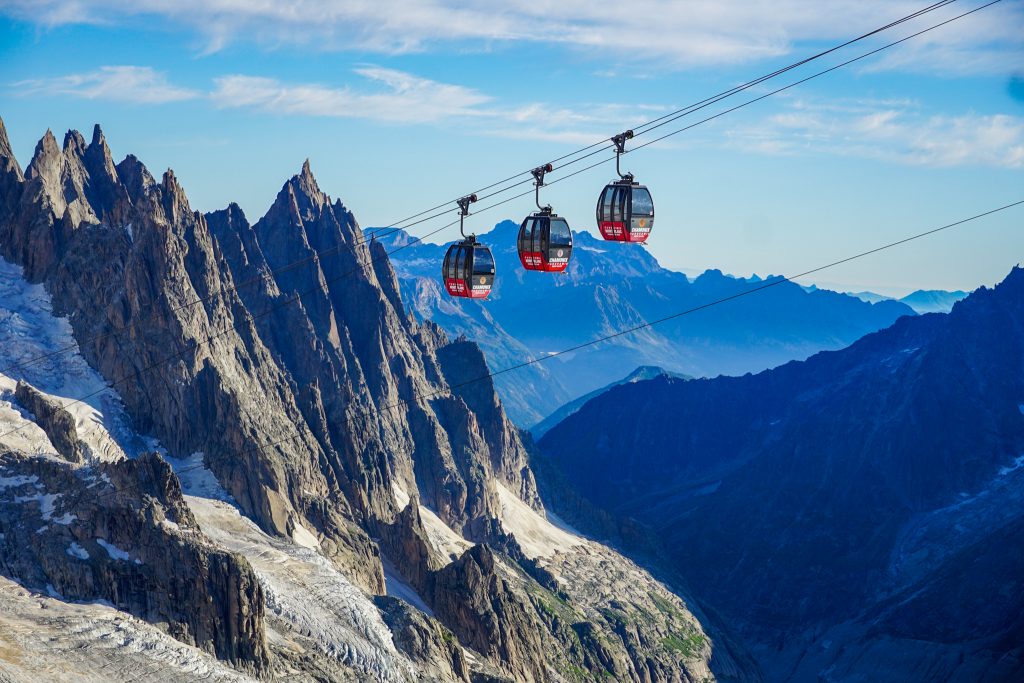

Despite the dire state of the glaciers, they actually were remarkably crevasse free and easy to walk across. We crossed an area of compression so there were minimal crevasses and still some snow covering the ice.
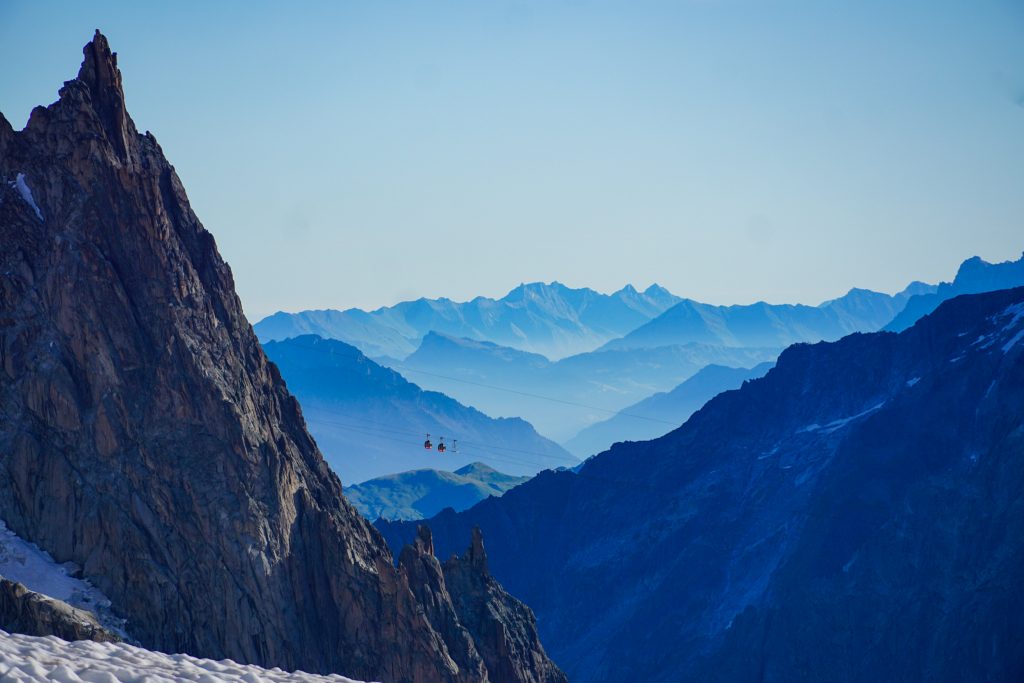
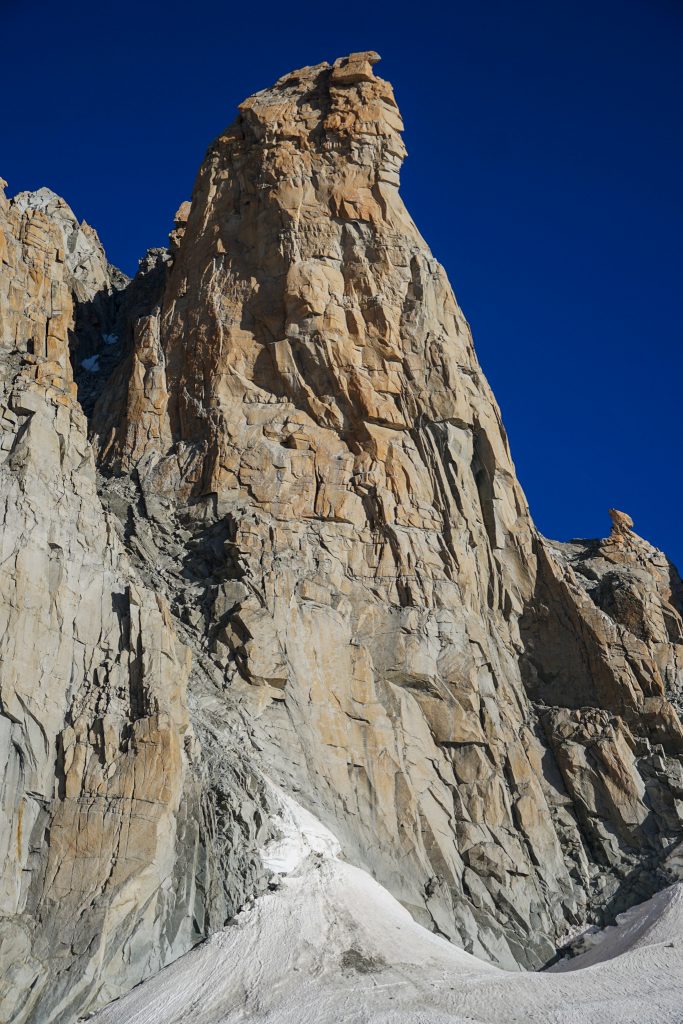
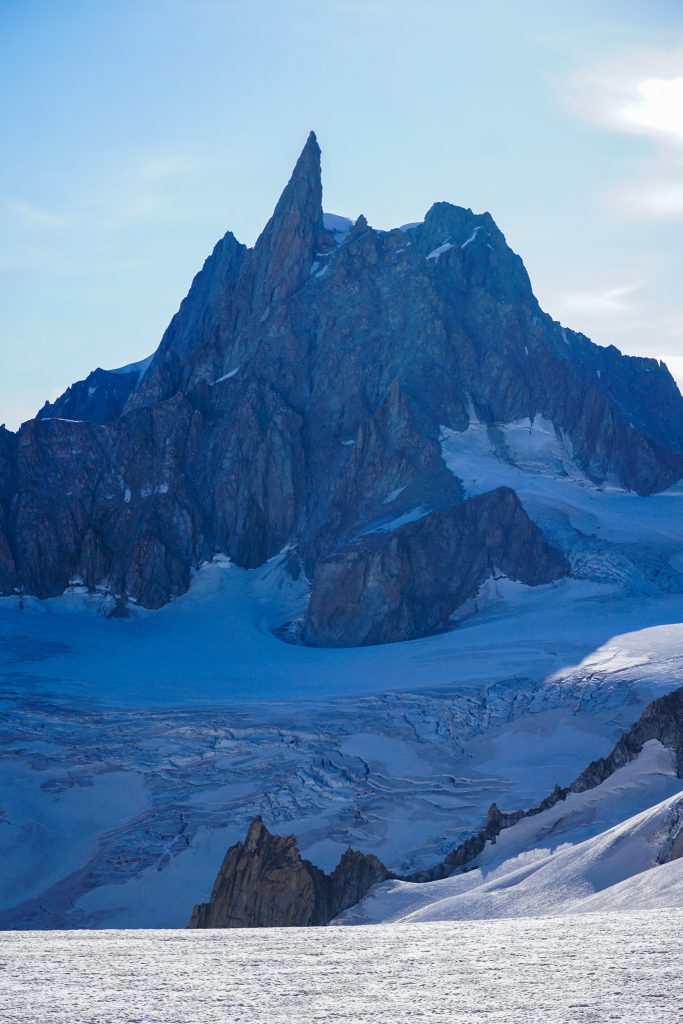
I figured the access couloir to the ridge would be the crux of the route. Most people do this when it is snow covered, but it was obviously barren rock at this point. I was worried about an icy bergschrund, but it was still bridged and pretty reasonable with strap-on crampons and our running shoes. I was originally considering not even doing this linkup because all the information the guides put out was how bad any snow / glacier route was and how bad rockfall was with all the heat and melting. Fortunately, I had the contact of the famous guide Ben Tibbetts (check out his incredible book on 4000m peaks in the Alps) and he thought it would still be manageable. It turned out to be quite simple.

The scramble up to Col du Diable was a bit loose but overall quite fast and easy. The mountain did seem to be disintegrating. In addition to the rapidly receding glaciers in the Alps, the permafrost is melting, creating more rockfall hazards. Just looking around at the moraines and evidence of glaciation, it was clear to me that the Alps have been hammered far worse by warming temperatures than my home Cascades. Alpine climbing is fundamentally changing here because old routes and approaches are no longer safe or viable.
Once at Col du Diable, we did an à cheval to cross a small snowy knife edge and continued scrambling left around to the col between Corne du Diable and Chaubert.
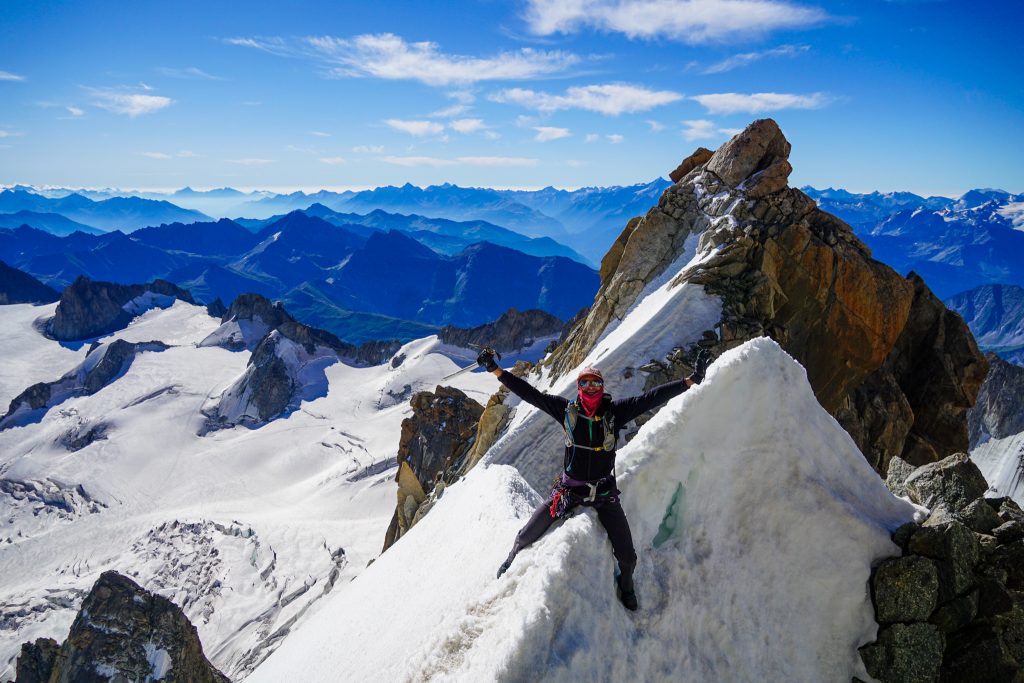
Here the real climbing begins. We put on climbing shoes and Sean lead an easy pitch to the summit of Corne du Diable. This is the first 4000m peak in the traverse!
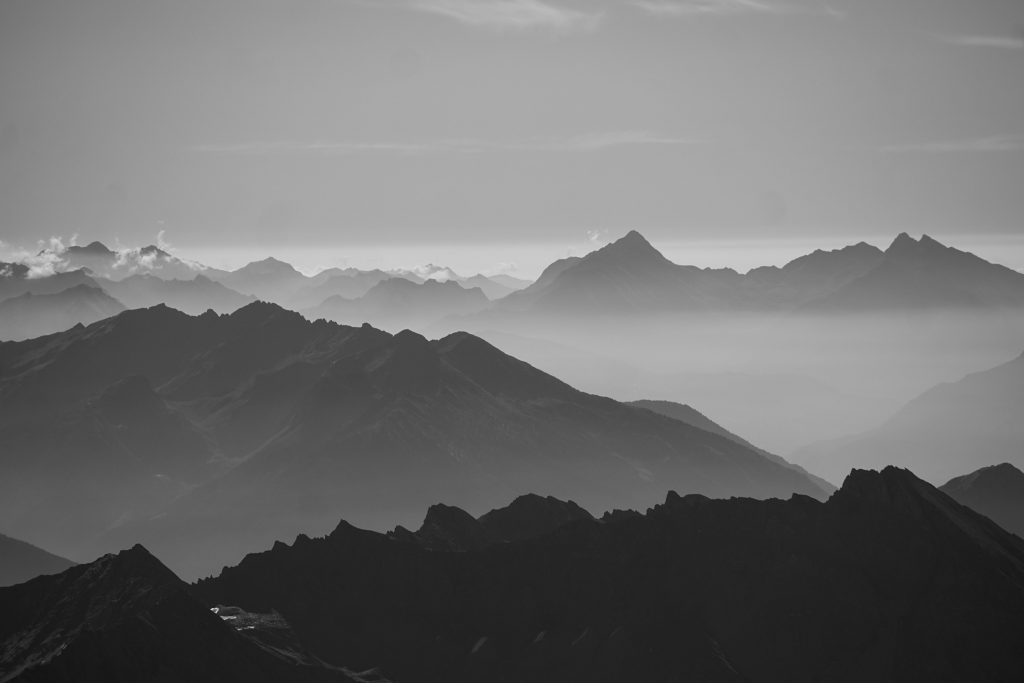

Back at the col, we did an easy pitch to the summit of to the summit of Chuabert. There was some great knife edge climbing here. Three rappels lead us down the backside to the next col before Médiane.
At this point, we had caught up to the other parties who started very early in the morning, so our progress slowed down some. But it was comfortable and warm in the sun so we did not feel rushed. I led a fun 5b (5.7) pitch up cracks to a crazy exposed ledge, where we chatted with the party in front of us.
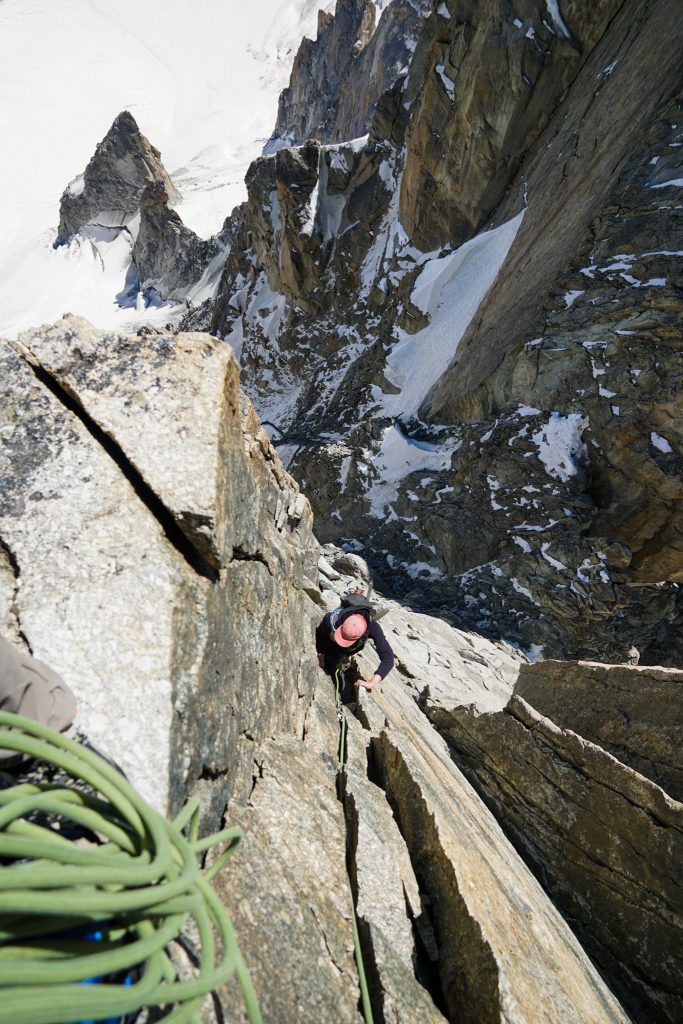
One more pitch got us close to the summit of Médiane. We started to get impatient behind a party that took 30 minutes just to move through a little squeeze tunnel. When we finally got by, we did the little boulder problem up to the exposed summit of Médiane.

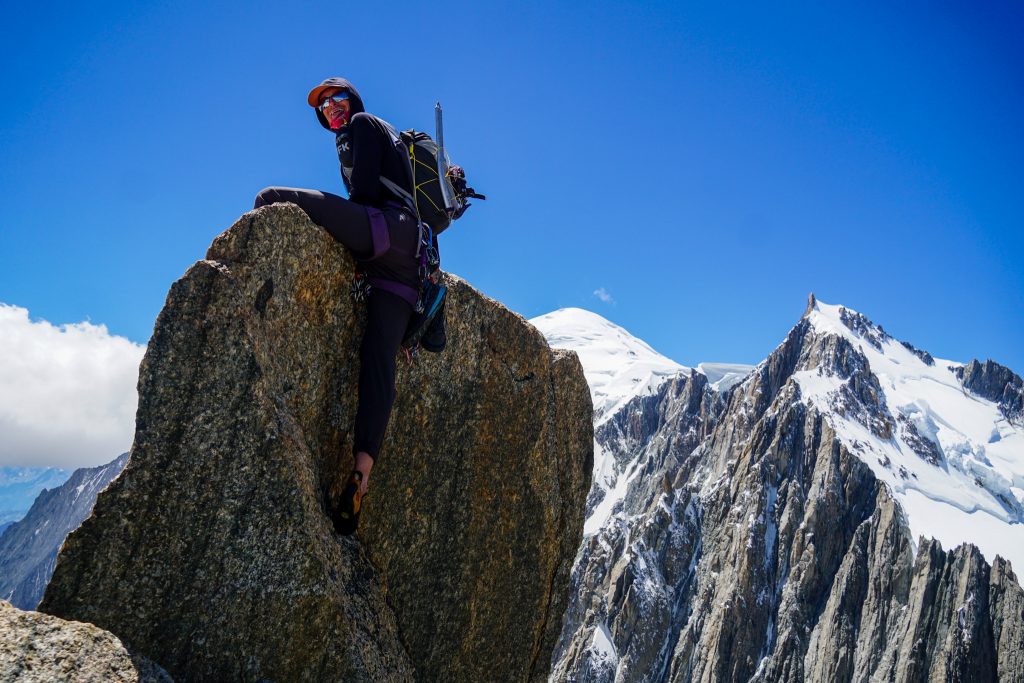
A rope stretching rappel brought us down to a dark, cold, snowy col. Here we asked if we could pass the party in front of us and they obliged. The shaded rock was icy to the touch, with actual ice in some of the cracks still. Our hands went numb quickly. Even though it has been so hot and dry this summer in the Alps, it was a reminder that we still were climbing rock at 4000m!
Two pitches got us to the higher summit of Carmen. The final bit had a beautiful exposed ridge to the finish!
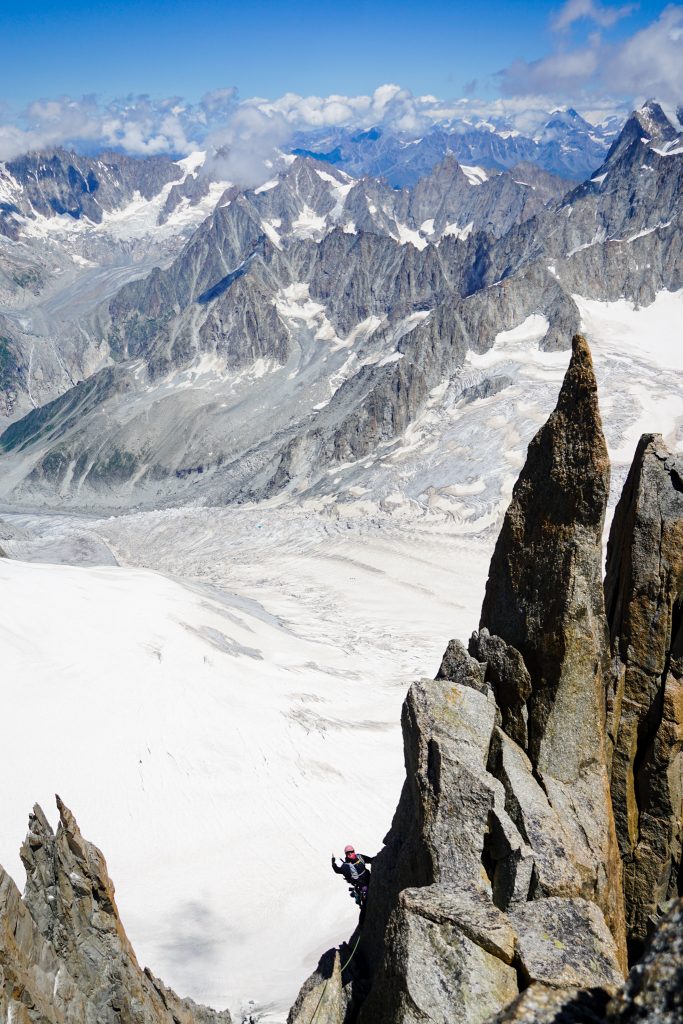
Three rappels down the backside brought us to a chossy gully and the start of the scramble to the finish on Mont Blanc du Tacul. For most parties, this is the end of the technical climbing. However, we were not going to skip Isolée, the crux of the entire route!
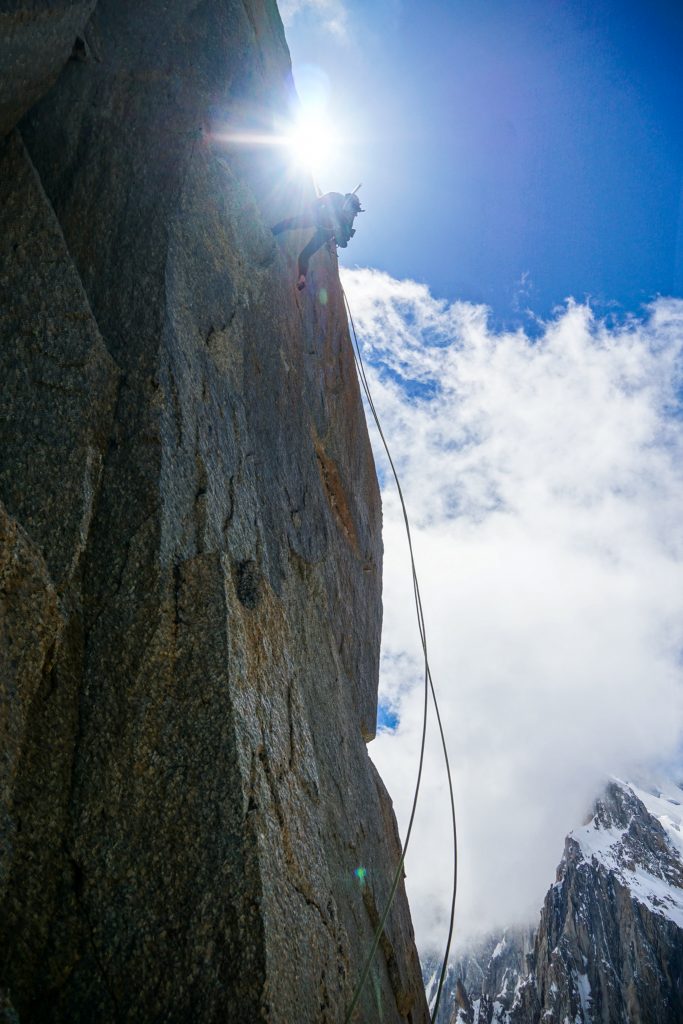
We left our packs behind and I led a full 60m pitch to the summit of Isolée. There was a tricky roof sequence, which I pulled on absolutely bomber hand jams! The entire pitch was basically protected by stuck gear and pitons! It felt so good to put the crux difficulties behind us. For Sean, this was the most technical peak in the entire list!
Two rappels brought us back down to our gear. We changed back into running shoes and finished the long scramble to the summit of Mont Blanc du Tacul. The elevation and exertion was starting to wear down on me, so Sean took the rope and blazed ahead. He may be almost twice my age, but Sean still moves faster in 3rd class to low 5th class terrain than anyone else I have ever met!
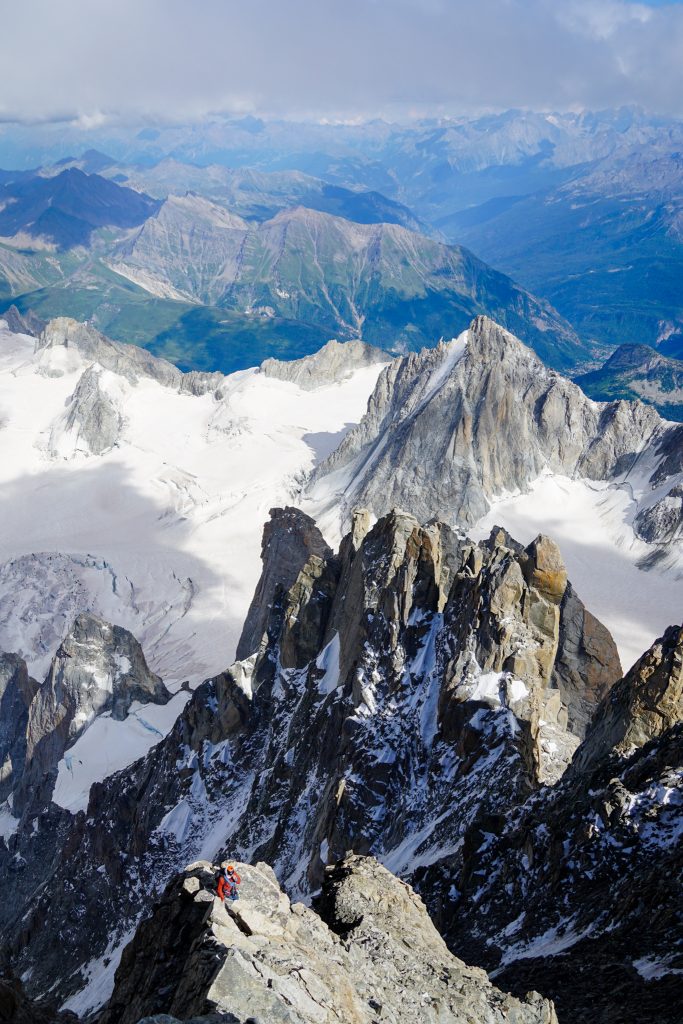
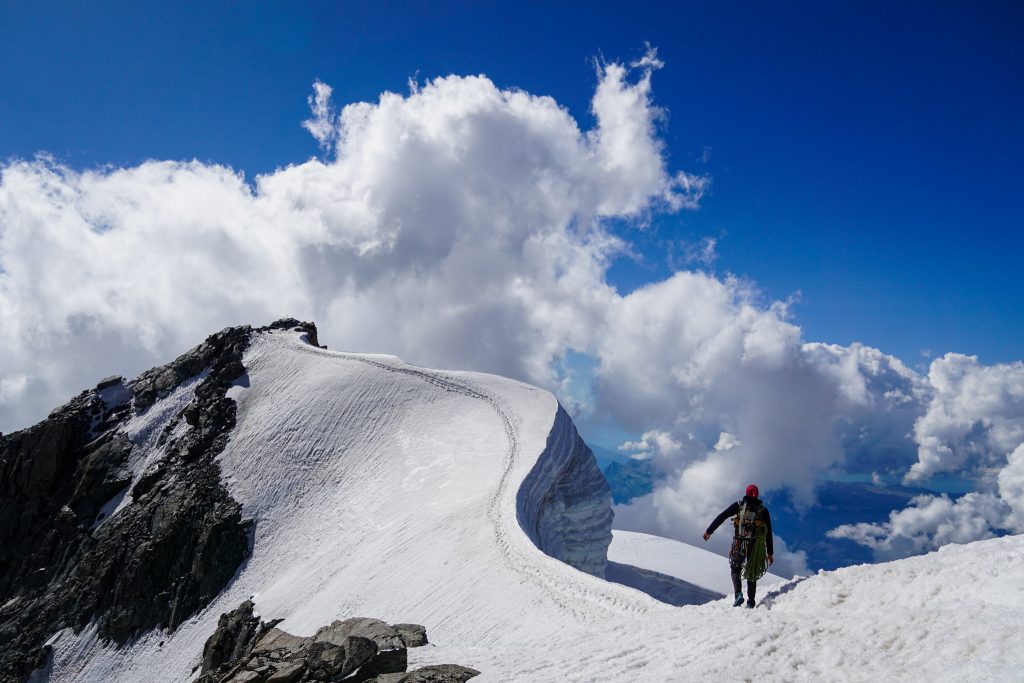
On the summit of Mont Blanc du Tacul, the clouds swirled around us. The relief to the valley floor 10,000 feet below was incredible, as was the sea of ice and granite gendarmes all around. The Mont Blanc Massif is so incredibly vast and steep. It is beyond comparison to anything I have experienced before.
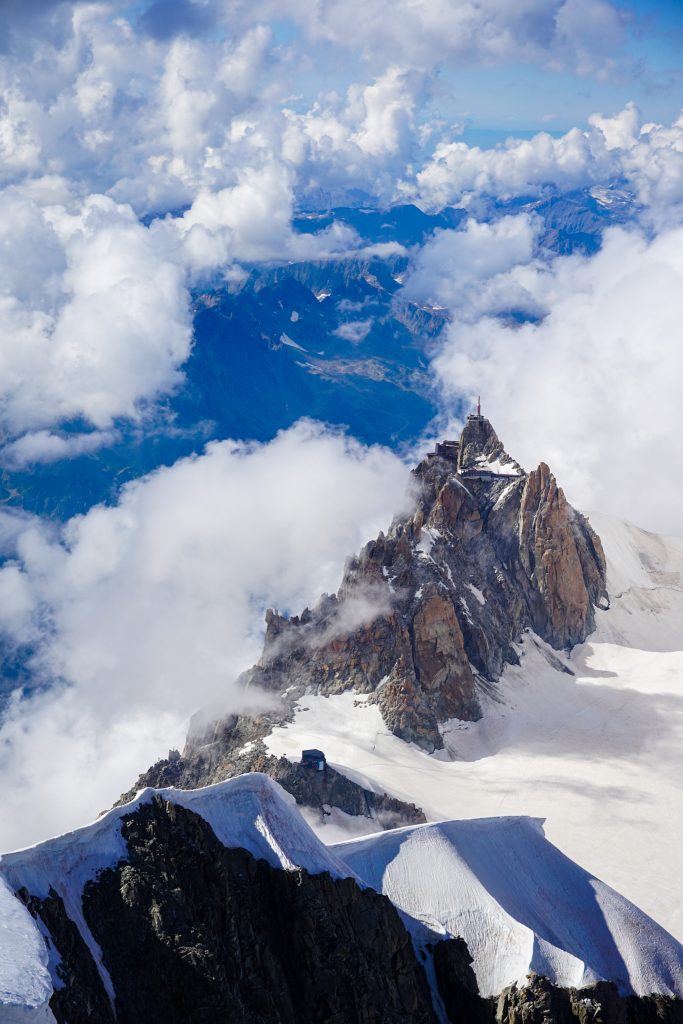
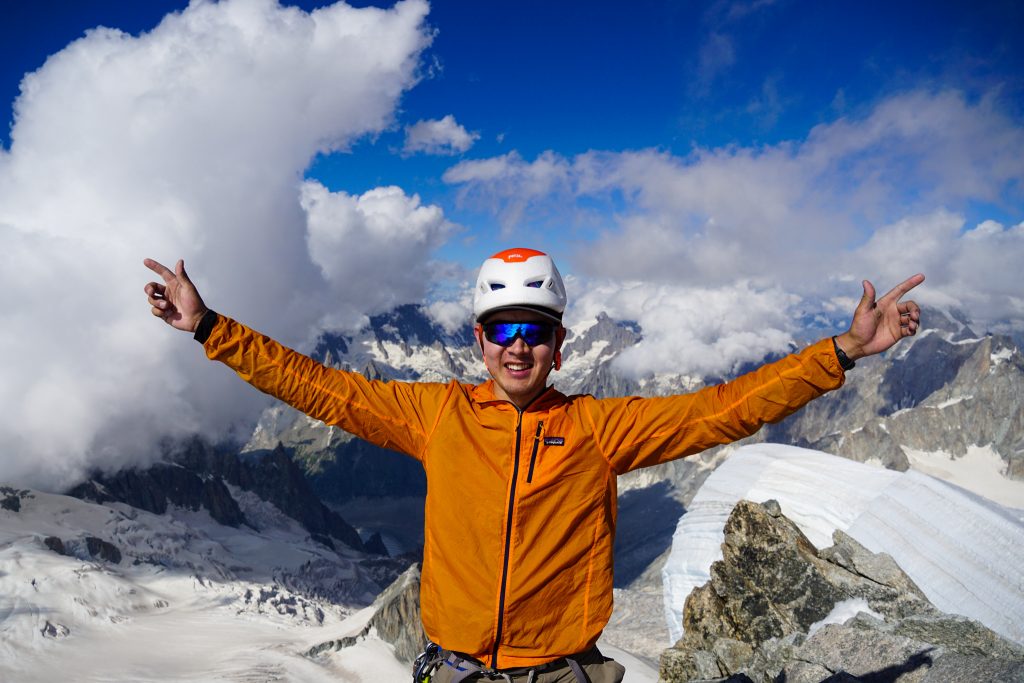

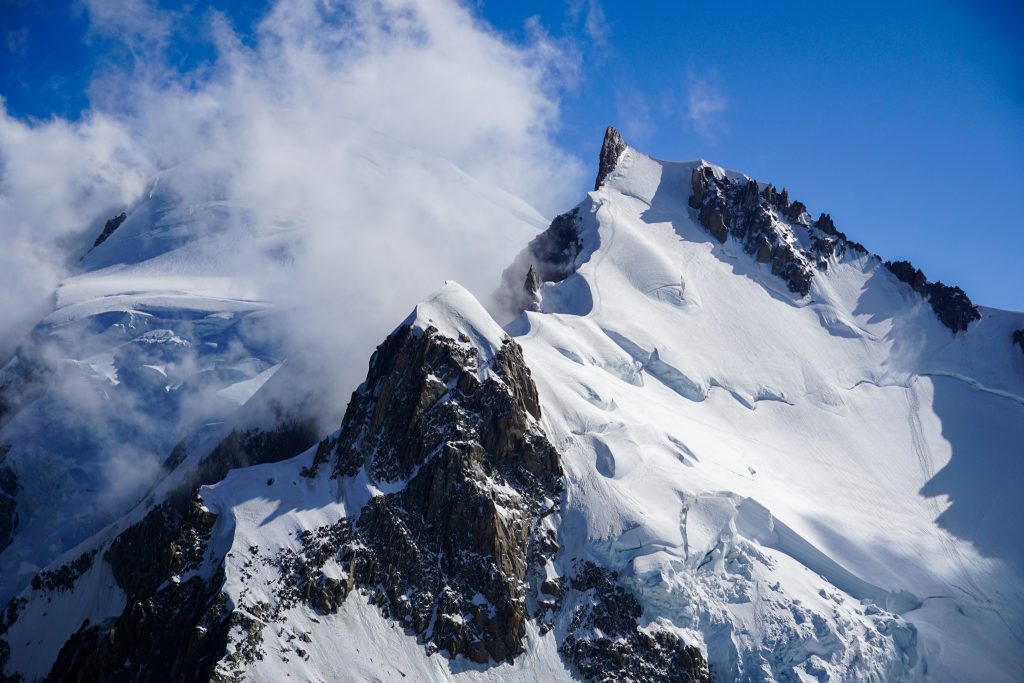
We roped up for the descent to the Cosmiques Hut, which follows a standard Mont Blanc ascent route from Aiguille du Midi. Sean found a nice 0.75 ultralight cam in the snow, which was convenient because apparently he owes someone a 0.75 cam! Once again, I was surprised how simple the glacier navigation was considering the terrible snow year. We followed the mega bootpack around a few crevasses and had to jump one. The snow was beyond slushy and the downside of our running shoes finally became evident, but soon we would be at the Cosmiques Hut.
I had never stayed at a European “hut” before. The Cosmiques Hut is not really a hut, but rather a space age hostel built next to a glacier high on a cliff with the most incredible view. We arrived just in time for dinner, where we met some nice Germans and refueled after a great day. The hut even gave free drinking water, which is a rarity in the Alps!
Right around sunset, the dense clouds that had enveloped the hut finally broke and we witnessed one of the most magical sunsets ever. Mist and clouds sheared off the cliffs below and the sun’s rays lit all the valleys stretching to the flatlands of North Europe. The light and clouds were constantly shifting. It was a beautiful end to a special day.
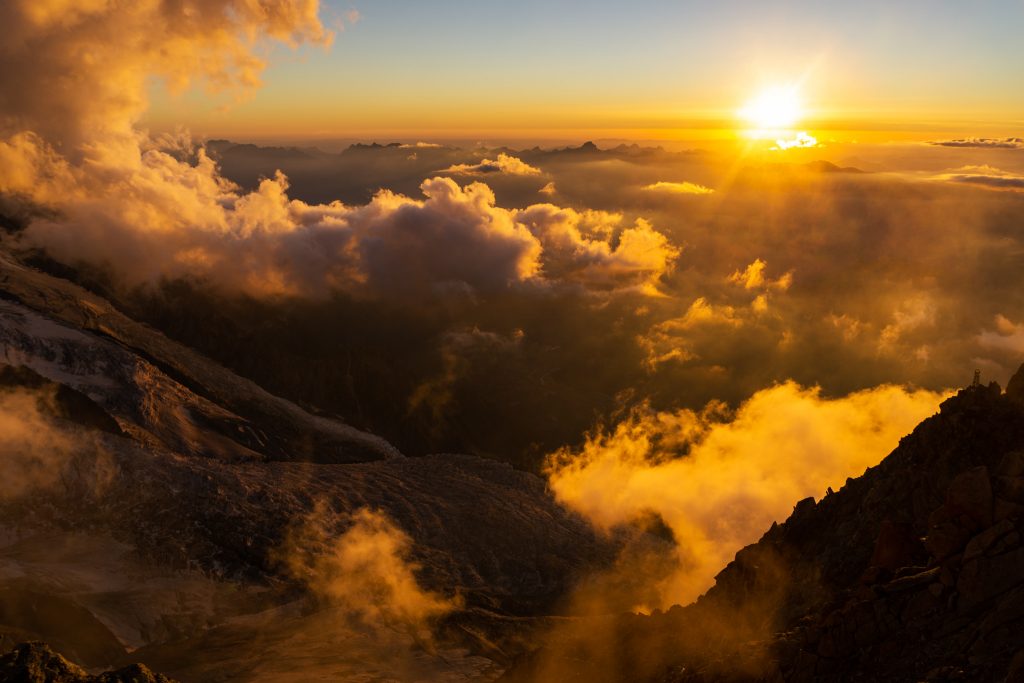
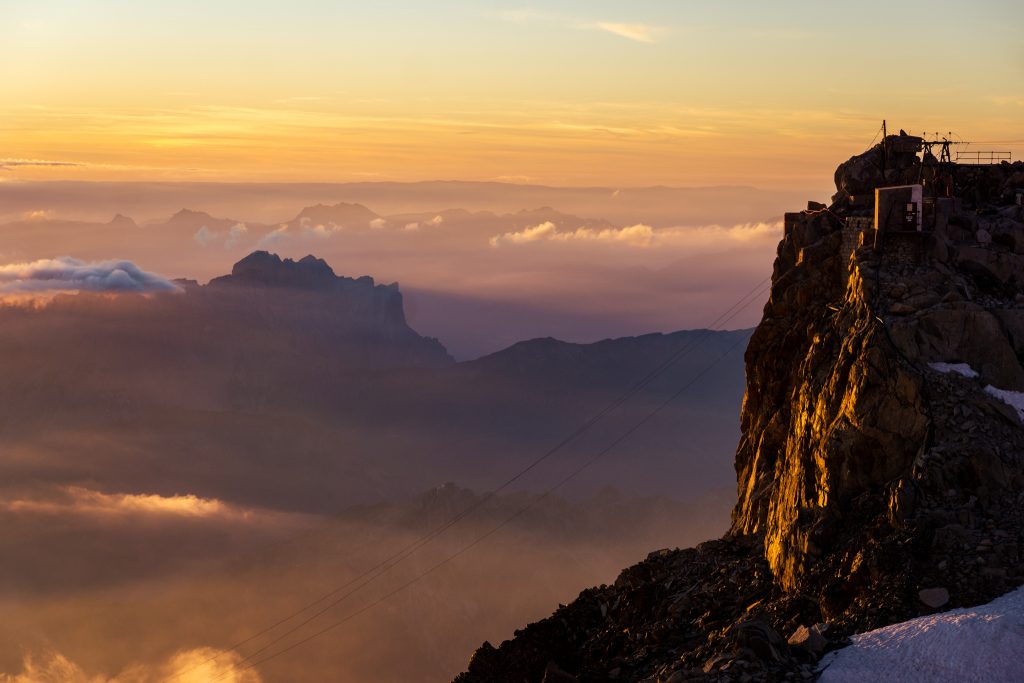
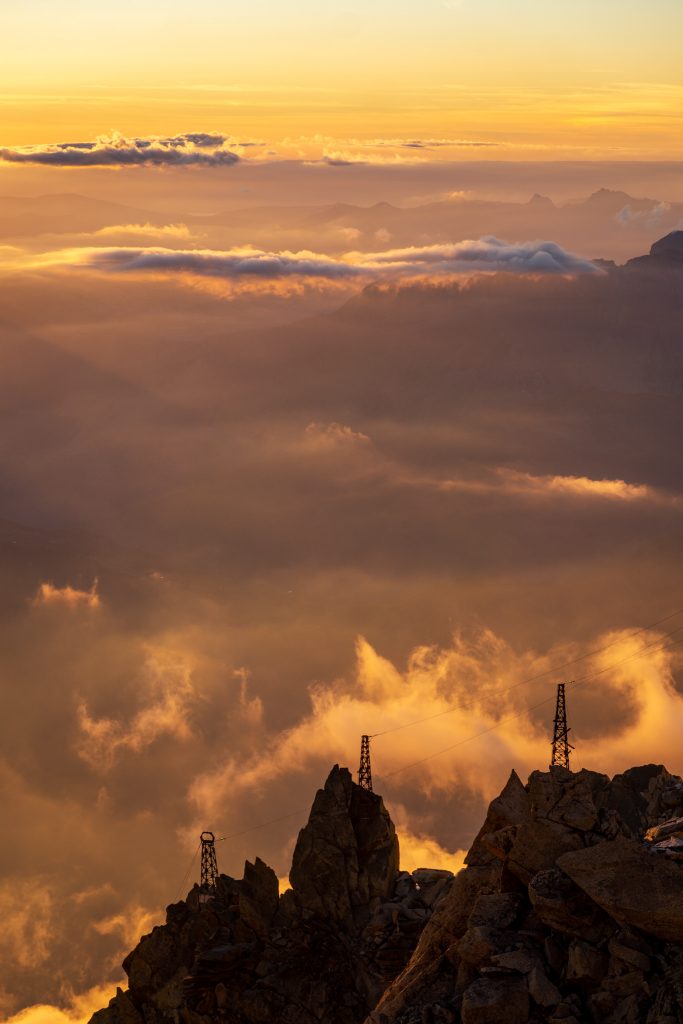
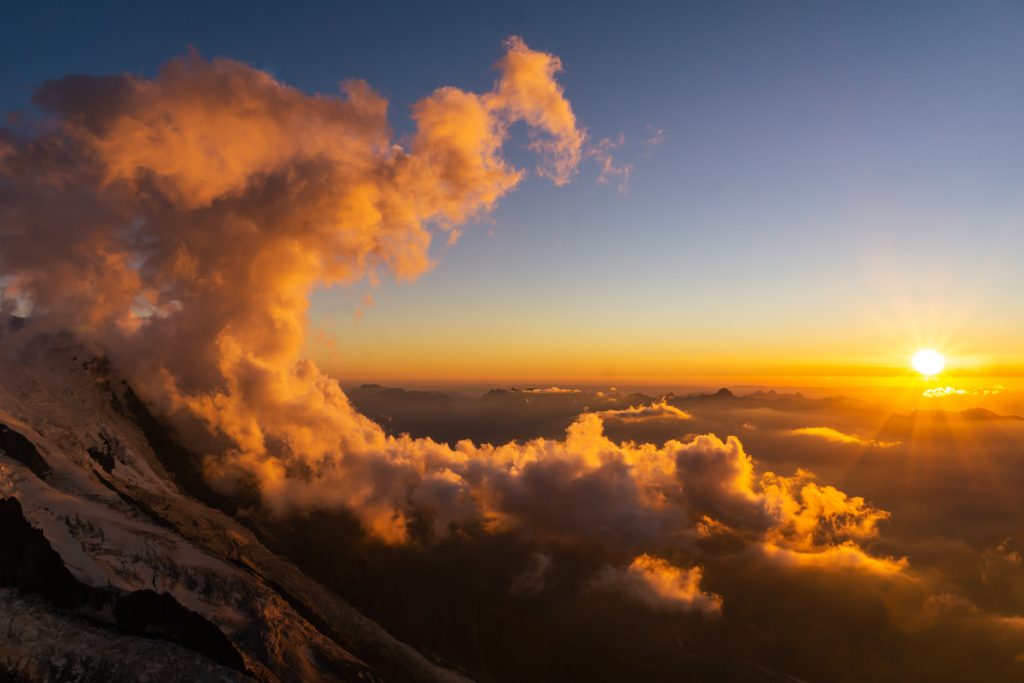
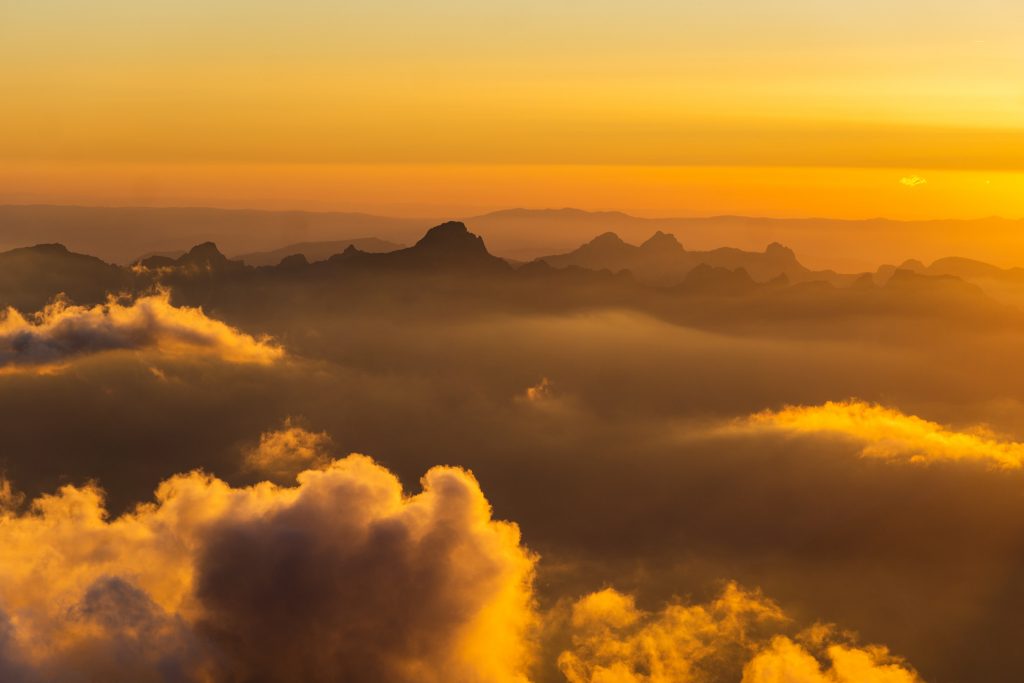
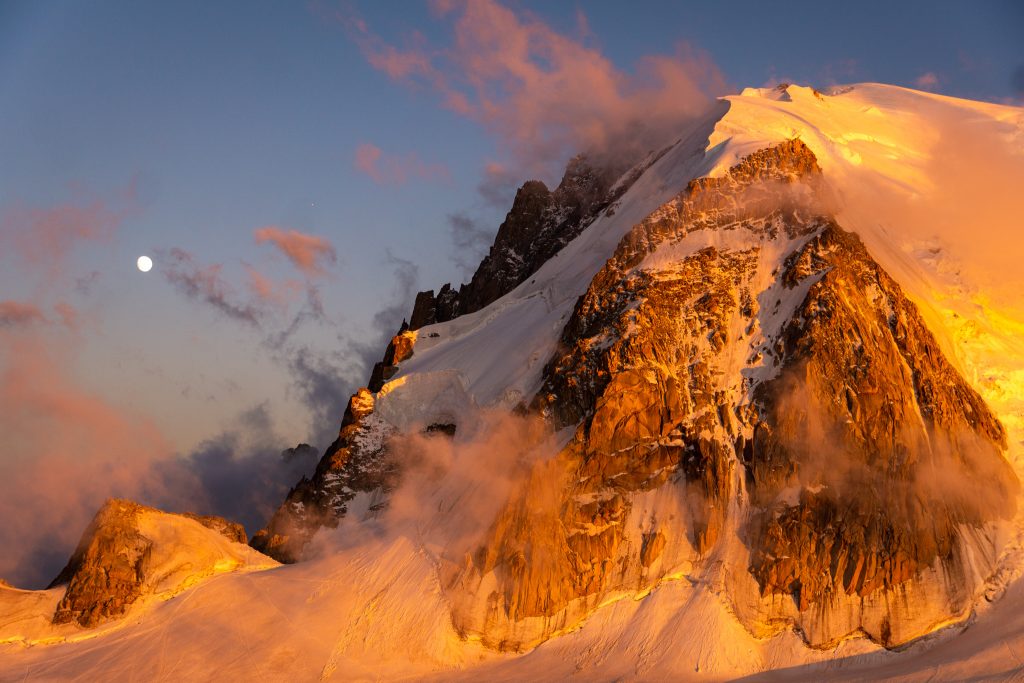
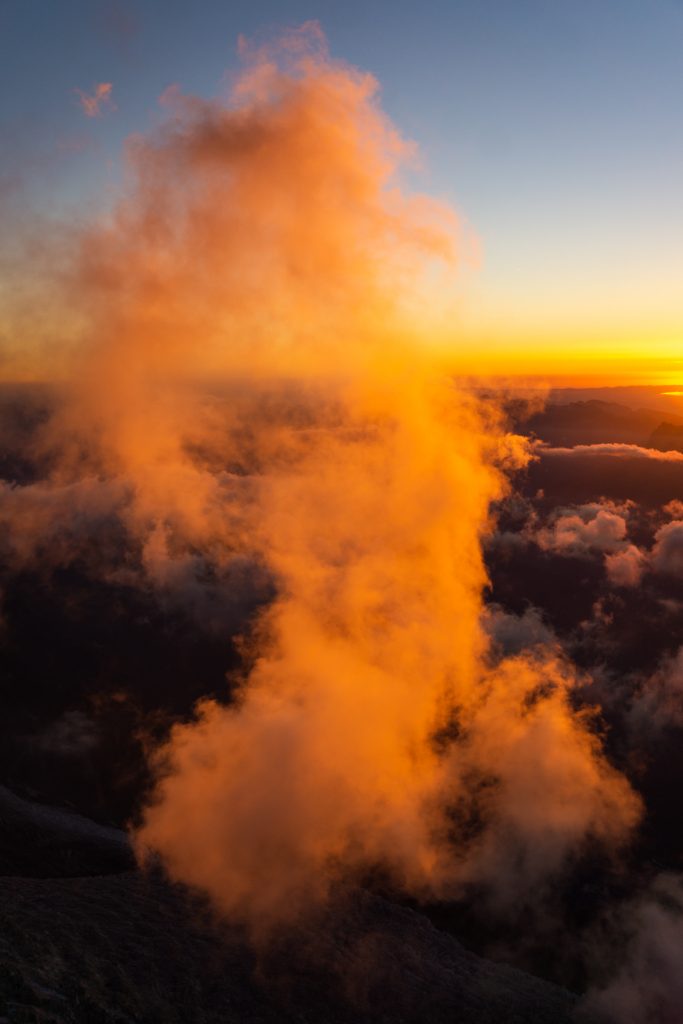
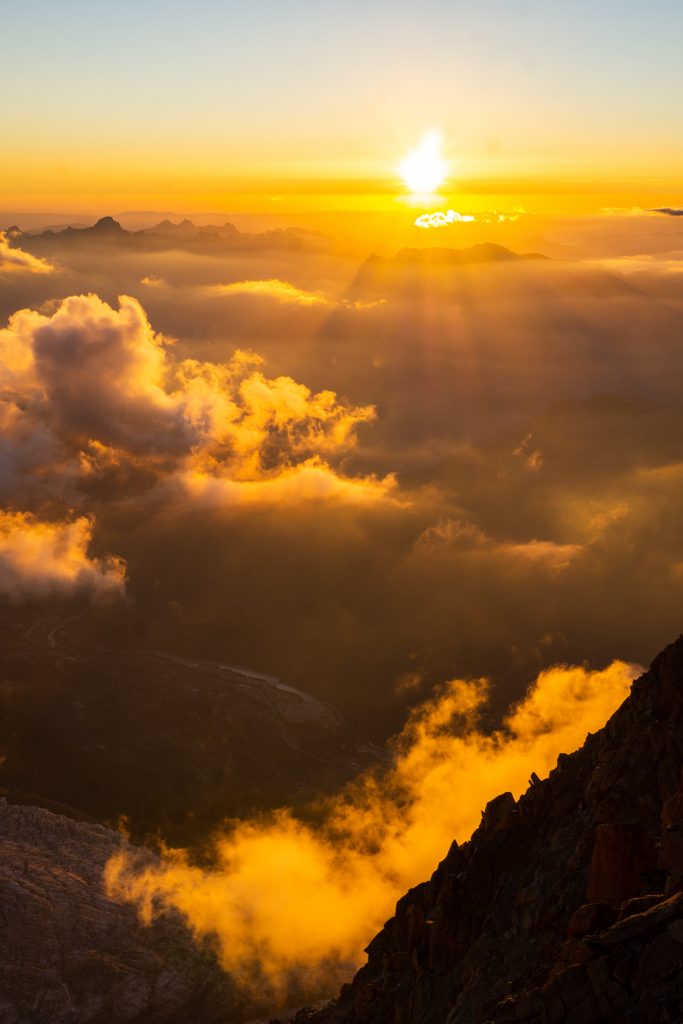
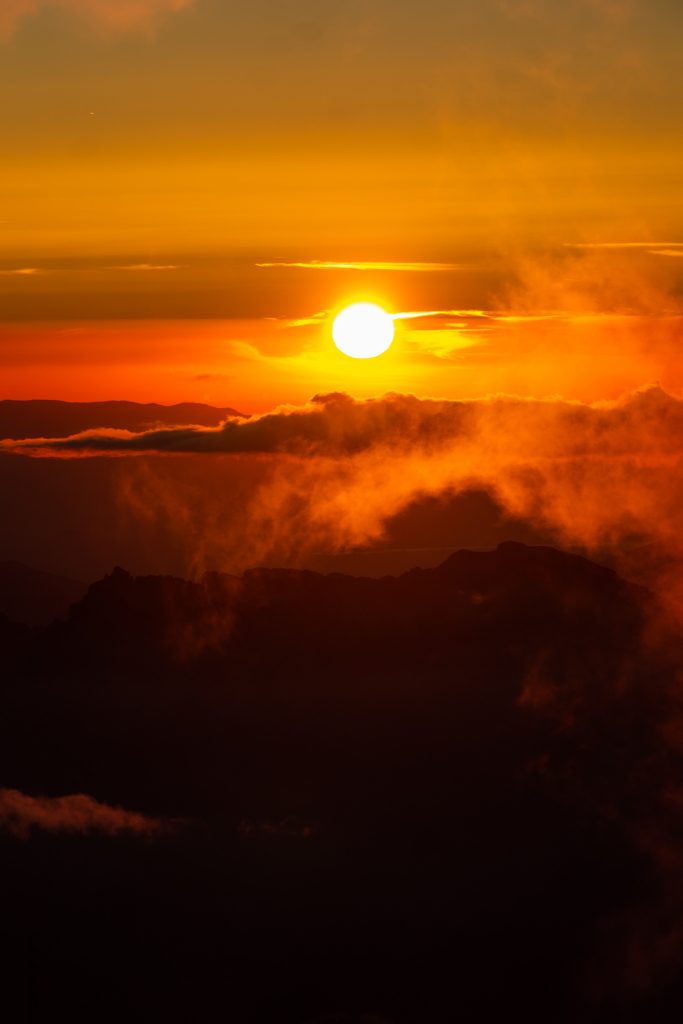
I woke up the next morning and everyone, Sean included, had evacuated my hostel room for the 4 am “Mountaineer’s breakfast”. I had the 7 am breakfast and then packed up all the gear (including Sean’s climbing shoes, since he no longer needed them in Europe) and walked over to the Aiguille du Midi station.
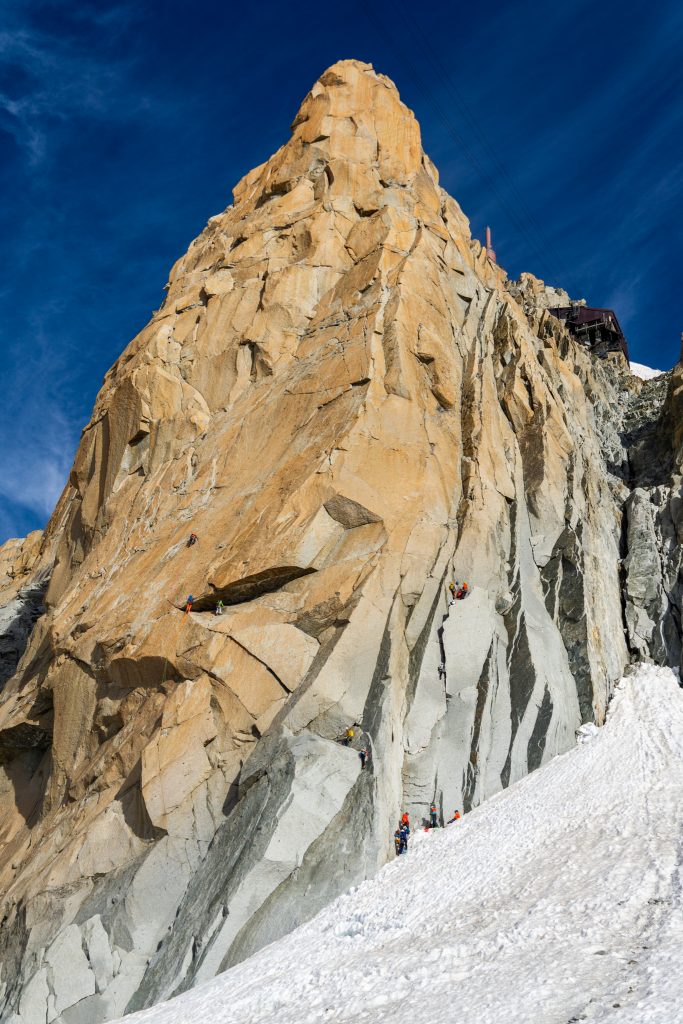
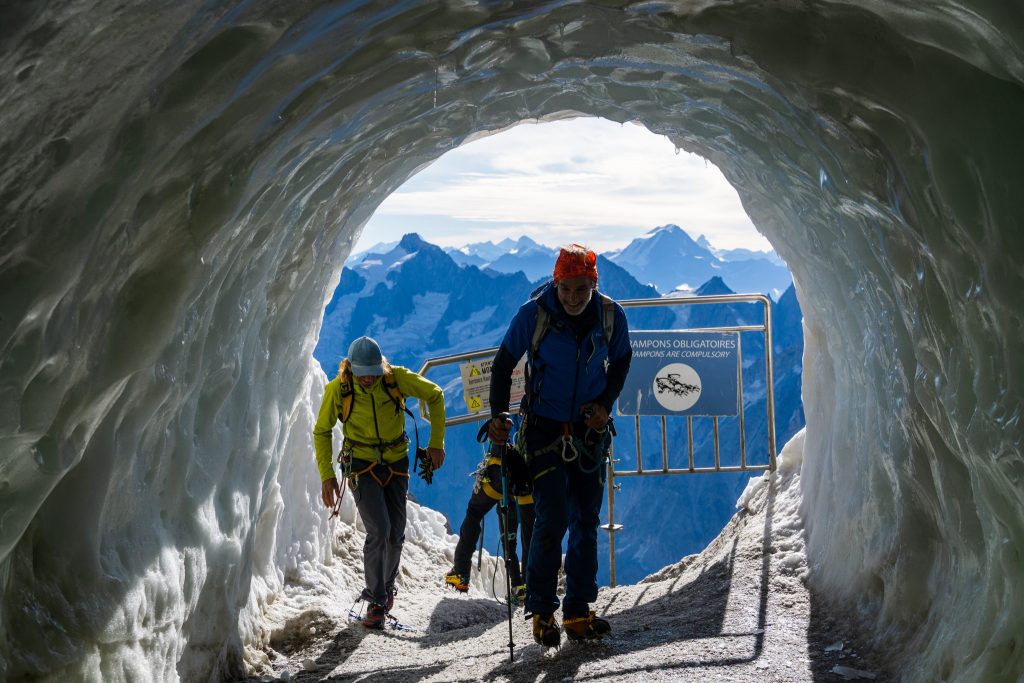
I played tourist for a while at Aiguille du Midi, reading about the history and glaciers and taking the elevator to the tower on top. It was funny to watch climbers finish their routes at the station, belaying off the railings.


After I was satisfied, I bought a ticket for the Panoramic cable car to get back to the Italian side of the massif. The pricing structure is a joke, charging $32.50 for one way and $33.00 for a roundtrip. I shared the long, stuffy ride with a few other Americans – an old man who kept asking if he could walk on the glaciers since he had trekking poles, and two hungover frat boys sightseeing in Europe. I joke that what I am doing here in Europe is “alpine tourism”, but these were real alpine tourists.
After a few more lift rides, I was back in the Aosta Valley and the heat of the lowlands. Access here in Europe really is different. You can be on a glacier one moment and down in a town the next.
Whenever I leave my home mountains to more famous venues like Alaska, the Tetons, or the Alps, I feel some sort of imposter syndrome. I am nervous that I do not belong in these “world-class” ranges or do not have what it takes. But every time, I find that the Cascades have actually prepared me beyond all expectations. Sean and I had a relatively easy time on this traverse, especially compared to all the other parties who were skipping summits and struggling to finish. When I told one of them it was my first time climbing in the Alps, he was aghast because of how quickly and easily we were moving. Technically, it was my first climb in the Alps, but years of bushwhacking and side hilling in the American Alps had over prepared me for this moment. We are very fortunate to have such wild, rugged, diverse mountains in Washington.
Arête du Diable was such an enjoyable experience and truly a fortunate encounter for both of us. Without Sean, I would not have gotten to experience real alpine climbing in the Alps. Without me, Sean would not have been able to complete these peaks solo. It was a little hectic and expensive to figure out, but in the end, it was one of those unique life experiences that you cannot put a dollar value on. I am so grateful for this opportunity. While there is so much more alpine climbing to do here, I feel satisfied with a quick bite, because I know that someday I will be back for more.
Notes:
- The total cost of this worked out to be something like $200 ($65 for the skyway, $74 for the Cosmiques Hut, $33 for the Skyway, $15 for parking down low, $10 for gear rentals, $10 for gas). Totally worth it in my opinion.
- I was able to reserve the Cosmiques Hut just a few days before and they had space for us. Even people who showed up without reservations (not encouraged) because they missed the last Aiguille du Midi cable car down were able to stay. It does not seem to be as crowded as one might expect.
- Although running shoes were fine for us, there is no real disadvantage to a light three season mountaineering boot since there is no long hiking approach like in the Cascades. I can see why mountain boots are so popular here. However, I did feel like a 4 season boot like Nepals would be a bit overkill.
- The climbing felt about on par with alpine grades in the US, if not slightly sandbagged. The crux pitch on Isolée would probably be 5.8+ at Washington Pass.
- We found the climb to be very simple in late season conditions. If you go earlier, the approach couloir might have snow but then there will also be snow between many of the rock pitches, complicating things. We had to cross a few short snow patches in a rock shoes, but everything else was generally dry.
- We used a single 60m rope, nuts, and a single rack of cams 0.4-2. We never had to simul climb really because each individual tower is not that long. All rap anchors are bolted, something the North Cascades National Park really should consider allowing.
- From Helbronner Point to the Cosmiques Hut took us just about 12 hours. We probably would have taken 10 hours if not for slower parties in front of us.
- You can skip many of the summits if you are behind on time. You can skip Corne du Diable and Isolêe entirely if you want. But the summits are all great and definitely worth it.
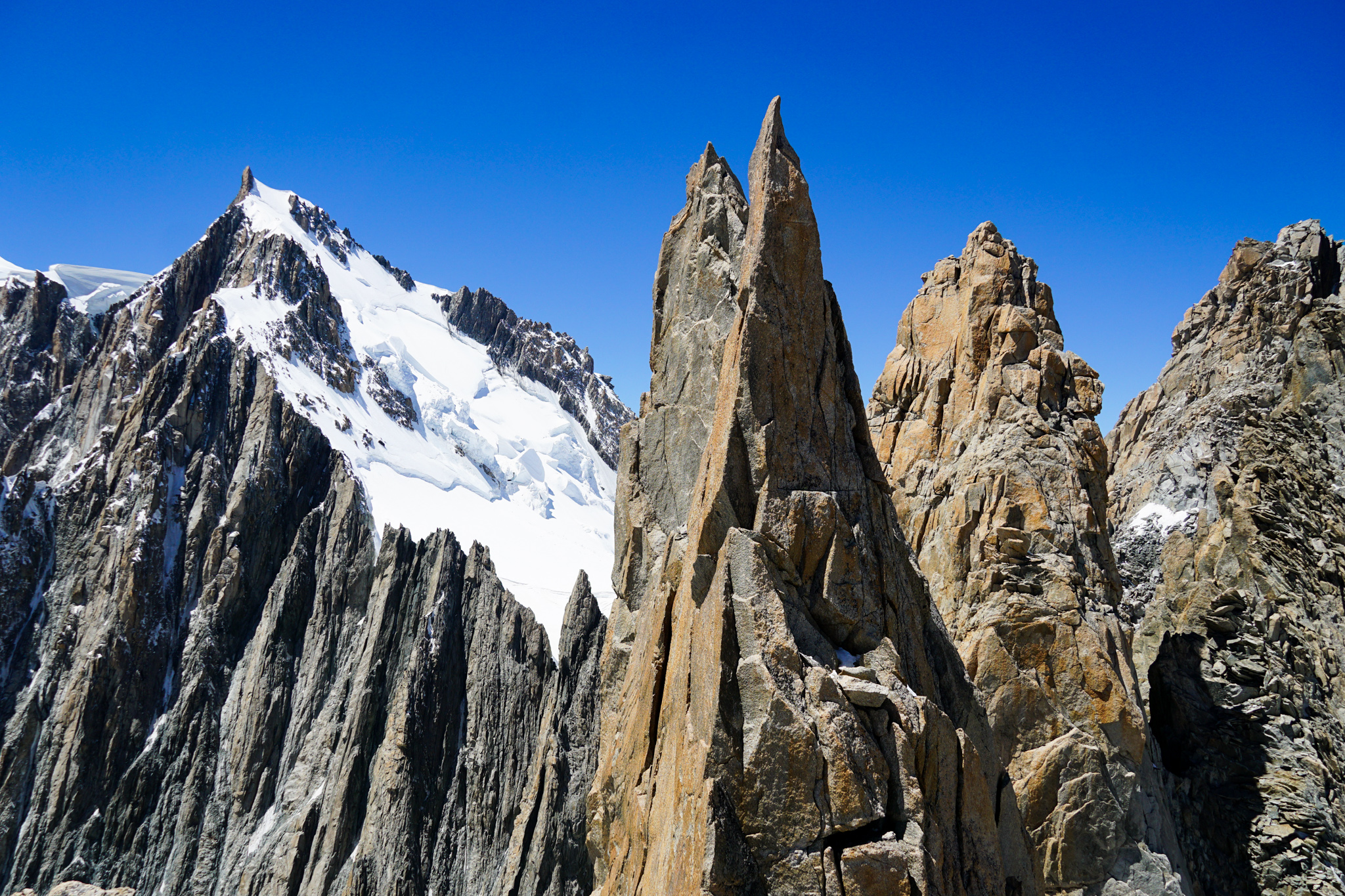
Super sweet report – thanks for sharing and so great you did the typical Kyle thing and instead of doing the Cosmiques Arete like all us other punters on our first visit (with a guide), you just traipsed up a classic full day’s outing under your own steam. Bien fait!
Haha! I didn’t know about Cosmiques Arete, but if I had, I could have scrambled that to get back to Aguille du Midi instead of walking on the glacier solo! Not sure which was more risky…